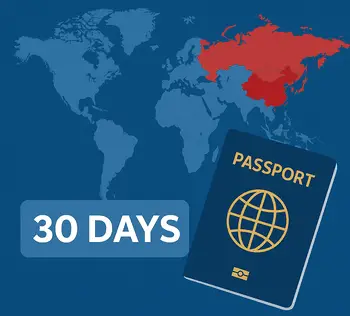
China’s Ministry of Human Resources and Social Security (MOHRSS) has released a comprehensive notice to further optimize the classification and certification standards for high-end foreign talent working in the country.

The move targets both Category A (top-tier) and Category B (specialist) foreigners, unifying national benchmarks while allowing local adaptations to address urgent talent shortages.
This policy refresh aims to enhance service quality, improve approval efficiency, and reinforce China’s attractiveness amid global competition for skilled professionals.
Background and Policy Context
China first issued the “Classification Standards for Foreigners Working in China” in 2017, establishing a basic A/B talent framework.
Since then, the landscape of global mobility and digital economies has evolved rapidly, prompting authorities to revisit and refine these benchmarks.
The 2025 notice builds on existing rules, integrates international best practices, and responds to local labor market demands, aligning talent recognition with China’s high-quality development agenda.
Rapid urbanization, cross-border innovation hubs, and mega-projects under initiatives like the Greater Bay Area and Silk Road Economic Belt have intensified the competition for foreign expertise.
To sustain innovation and economic transformation, Chinese regions require flexible yet rigorous mechanisms to identify and certify the most impactful global professionals.
Highlights of the New Notice
Objectives of Optimization
- Enhance professional service levels and approval timeliness for foreign talent.
- Unify certification standards at the national level, while enabling local “urgent need” classifications.
- Build and refine a dynamic, multi-tiered taxonomy for high-end foreign talent with clear definitions and implementation guidelines.
National vs. Local Responsibilities
- MOHRSS sets unified Category A/B standards and nationwide certification criteria.
- Provincial human resources authorities lead in defining local adaptations, urgent-need categories, and guiding catalogues.
- Cities and sectors provide feedback to ensure standards remain aligned with real-world demand.
Detailed Breakdown of the Six Key Measures
The notice outlines six major initiatives to upgrade China’s foreign talent recognition framework.
| Measure No. | Description | Lead Authority | Implementation Focus |
|---|---|---|---|
| 1 | Revise national Category A certification criteria and establish unified standards | MOHRSS | Update professional benchmarks; align with international norms |
| 2 | Local integration of labor market supply-demand and “urgent shortage” talent needs | Provincial HR authorities | Research and define “urgent-need” foreign talents; tailor local policies |
| 3 | Develop province-level classification standards and guiding catalogues for talents | Provincial HR authorities | Combine national framework with regional priorities for A/B talent classification |
| 4 | Publish local catalogues online after central approval | Provincial HR authorities | Public release of talent categories, job codes, competency requirements |
| 5 | Nationwide “one-stop” mutual recognition for certified talents | MOHRSS with provincial coordination | Implement “approve once, recognized everywhere” for Category A and B talents |
| 6 | Permit provinces to continue existing C-class standards without immediate revision | Provincial HR authorities | Maintain local C-class rules; begin working on new standards and preparatory tasks |
1. National Revision of Category A Standards
The MOHRSS will upgrade the existing benchmarks for Category A high-end foreign talent, clarifying job titles, required academic credentials, impact metrics, and sector priorities.
This revision ensures alignment with global certification practices, such as OECD guidelines on skilled migration, and addresses emerging fields like AI, quantum computing, and green technologies.
2. Local “Urgent-Need” Talent Classifications
Recognizing that some regions face acute talent gaps, provincial authorities can now research and define “urgent shortage” foreign talent categories.
By referencing local industry needs—such as advanced manufacturing clusters, health sciences parks, or financial innovation zones—authorities tailor certification streams to attract specialists in high-growth sectors.
3. Province-Level Standards & Guiding Catalogues
Provinces will collaborate with universities, research institutes, and enterprises to develop local versions of the national classification system.
A standardized “guiding catalogue” will list eligible positions, competency codes, and qualification thresholds.
This catalogue must adhere to national Category A/B definitions while reflecting regional development strategies.
4. Public Release of Local Talent Directories
Once approved by MOHRSS and the Foreign Expert Work Entry Management Department, provinces will publish their foreign talent catalogues on official websites.
These directories will detail job families, occupational codes from the National Occupational Classification, required professional licenses, and language proficiency levels.
5. One-Stop Nationwide Recognition
Certified high-end and specialist talents will enjoy “one-stop nationwide recognition.”
After initial approval in any region, talents no longer need repeated certification to work elsewhere in China.
This mechanism removes redundant procedures, accelerates deployment, and supports multi-city assignments for foreign experts.
6. Transitional Treatment of C-Class Talent Standards
Local C-class (general foreign professionals) standards set by provinces need not be immediately amended.
Authorities may continue C-class certification under existing rules while preparing for broader reforms.
This transitional approach balances continuity with future policy upgrades, ensuring smooth implementation.
Implications for Foreign Professionals and Employers
The optimized framework presents several tangible benefits:
- Faster approvals and lower administrative burdens for top-tier experts.
- Clearer qualification pathways for specialists in emerging industries.
- Enhanced mobility within China via national mutual recognition.
- Improved transparency with publicly accessible guiding catalogues.
Employers should review updated job codes and competency requirements in local directories and adjust hiring criteria accordingly.
Foreign professionals can leverage the unified standards to plan career moves, ensuring credentials meet both national and regional expectations.
Challenges and Considerations
Despite the streamlined approach, stakeholders may face challenges:
- Varying local “urgent-need” criteria could create complexity for multi-region hires.
- Frequent updates to guiding catalogues demand continuous monitoring by HR teams.
- Alignment between national benchmarks and sector-specific licenses may require professional validation.
To mitigate risks, companies should establish dedicated compliance teams, subscribe to provincial HR portals, and engage local talent agencies familiar with policy nuances.
Best Practices for Navigating the New Standards
- Map job descriptions to National Occupational Classification codes and local guiding catalogues.
- Prepare evidence dossiers including degree certificates, employment letters, awards, and publications.
- Engage accredited foreign expert service agencies for initial dossier review.
- Train internal HR on policy updates and certification workflows.
- Monitor MOHRSS announcements and provincial HR websites for catalogue revisions.
Looking Ahead: Future Trends in China’s Talent Strategy
China’s talent policy is evolving toward greater openness and agility.
Potential next steps include:
- Integrating talent recognition with digital visa platforms and e-governance systems.
- Piloting global talent passes in Free Trade Zones to test one-stop services.
- Expanding classification to remote work and digital nomad categories.
- Fostering public-private partnerships for talent incubation and cross-border innovation ecosystems.
These trends reflect China’s ambition to build world-class research centers, incubate unicorn startups, and maintain competitive edge in critical technologies.
Conclusion
China’s 2025 notice on optimizing high-end foreign talent recognition standards marks a significant milestone in its talent management strategy.
By unifying national criteria, enabling local flexibility, and instituting once-approved-everywhere recognition, the policy enhances service quality and speeds up workforce deployment.
For foreign professionals and organizations seeking opportunities in China, understanding and aligning with these refreshed standards will be key to unlocking new career and collaboration pathways.
Sources
- Ministry of Human Resources and Social Security of the People’s Republic of China. “Notice on Further Optimizing the Classification and Certification Standards for Foreign High-End Talent.” mohrss.gov.cn, September 30, 2025. https://www.mohrss.gov.cn/SYrlzyhshbzb/rencairenshi/zcwj/wzgz/202509/t20250930_559842.html
- National Occupational Classification (NOC) – Employment and Social Development Canada. https://noc.esdc.gc.ca
- OECD. “International Migration Outlook,” 2024. https://www.oecd.org/migration/international-migration-outlook-1999124x.htm


